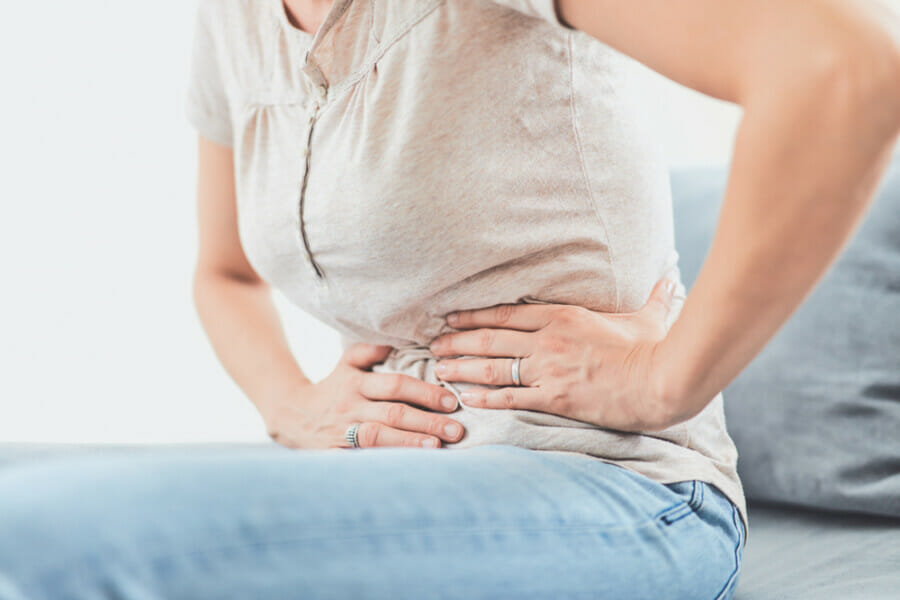3 Tips to Try If You’re Dealing with Digestive Problems
Yoga offers a variety of benefits for our physical, mental, and spiritual well-being, including aiding digestion. By reducing stress, yoga can help regulate the gut-brain axis. Recent studies even suggest that yoga could be beneficial in treating IBS.
During the holiday season, when many people tend to overindulge and then seek relief through yoga, you might come across poses that help with bloating. However, poses are just one component of yoga. To fully embrace the practice and experience its benefits, it’s important to approach yoga holistically, focusing on proper concentration and breath throughout the practice.
Yoga instructor Sara Sas, RYT, L.Ac., incorporates acupressure into her practice. As a licensed acupuncturist and Traditional Chinese Medicine practitioner, she combines specific yoga poses with acupressure techniques to provide additional relief and support for digestion. Here are three poses she recommends:
1. Wind-Relieving Pose (Pawanmuktasana)
- Lie on your back, inhale, and straighten both legs. Exhale, and bring your knees toward your chest, hugging them with your arms.
- Take several deep breaths in this position to relax and release tension.
- Identify your acupressure point (details below) and gently massage it while holding the pose and focusing on deep, mindful breathing.
Acupressure point: Stomach 36
Locate it: Position your hand just below the opposite knee, with the side of your index finger aligned with the base of your kneecap. The digestion-supporting acupressure point, Stomach 36, can be found around the tip of your pinky finger, just outside your tibia.
Why This Helps:
“Pawanmuktasana is beneficial for relieving gas and bloating by aiding in expelling trapped air in the digestive system,” says Sas. “When combined with acupressure on the abdomen’s command point, this pose benefits the stomach and spleen, supporting digestion, regulating intestines, and reducing gas. It’s a win-win.”
2. Goddess Pose (Utkata Konasana)
- Stand with your feet wider than hip-width apart, toes turned outward in a squat position.
- Squat down, slightly tuck your tailbone, engage your abdominal muscles, and keep an upright spine with relaxed shoulders.
- Raise your heels, shifting weight to the balls of your feet.
- Lower your heels, transferring weight to the back of your feet to lift your toes.
- Lean forward to reach under your toes and stimulate pressure points (see location below).
- Repeat the heel lifting and lowering, focusing on the acupressure point.
- Return to a flat-footed position.
Acupressure point: Kidney 1
Locate it: This point is at the center of the sole of your foot, closer to the bottom of your metatarsals rather than the arch.
Why This Helps:
“Goddess pose generates warmth throughout the body, improving circulation and digestion,” explains Sas. “Applying acupressure on Kidney 1 can help center yourself, promoting a sense of grounding, support, and strength. Grounded and centered individuals tend to have better digestion, whereas stress can negatively impact digestion.”
3. Easy Seated Twist (Parivrtta Sukhasana)
- Sit cross-legged with a straight spine, reaching the crown of your head upward. Place your left hand on your right knee.
- Maintain a straight spine as you twist to the right, placing your right hand on the floor near your hip. Avoid over-twisting.
- Look over your right shoulder and take deep breaths in this twist.
- While in this position, locate and massage the acupuncture point using your left hand (location described below).
- Change your leg position (if right leg was on top, switch to left) and repeat the twist on the other side while maintaining deep breathing.
Acupressure point: Spleen 21
Locate it: Known as “The Great Embrace,” this point is on the side of your ribcage and can be stimulated during a seated spinal twist resembling a hug.
Why This Helps:
Twisting poses are popular for digestive health as they help stimulate digestive organs. The Easy Seated Twist, especially when twisting to the right first, can massage the ascending and descending colon, aiding in the movement of waste. Adding acupressure at Spleen 21 helps move energy and blood, addressing stagnation around the diaphragm to improve digestion according to Traditional Chinese Medicine.














